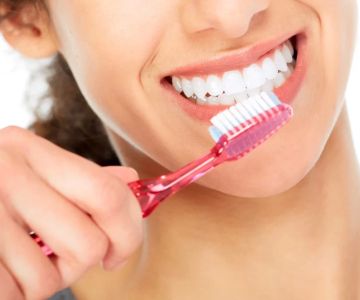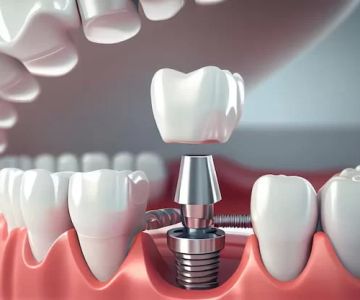Best Practices for Brushing Teeth: Essential Tips for a Healthier Smile
- 1. Introduction
- 2. Why Brushing Your Teeth Properly is Crucial
- 3. Proper Brushing Technique
- 4. Common Mistakes to Avoid When Brushing Your Teeth
- 5. How to Choose the Right Toothpaste for You
- 6. Where to Find the Best Oral Care Products
Brushing your teeth is one of the most important habits you can develop for maintaining good oral health. While it may seem like a simple task, brushing your teeth properly can make a huge difference in preventing tooth decay, gum disease, and bad breath. In this article, we’ll cover the best practices for brushing your teeth, share tips on how to improve your technique, and help you choose the right products for optimal oral care.
2. Why Brushing Your Teeth Properly is Crucial
Proper brushing is the foundation of good oral hygiene. By brushing your teeth at least twice a day, you remove plaque and food particles that contribute to tooth decay and gum disease. Plaque buildup can lead to cavities, tartar, and even tooth loss if left untreated. Additionally, brushing helps prevent bad breath by eliminating bacteria from the mouth.
Brushing your teeth properly ensures that your gums stay healthy and that your teeth remain free from harmful buildup. It also promotes a bright, clean smile and contributes to overall health, as poor oral hygiene has been linked to other conditions like heart disease and diabetes.
3. Proper Brushing Technique
While brushing your teeth may seem straightforward, doing it the right way is essential for maximizing its benefits. Here’s a step-by-step guide to brushing your teeth properly:
- Choose the Right Toothbrush: A toothbrush with soft bristles is ideal to avoid damaging your gums. Electric toothbrushes are also highly effective in maintaining oral hygiene.
- Use the Correct Amount of Toothpaste: A pea-sized amount of fluoride toothpaste is sufficient for adults. Too much toothpaste can create unnecessary foam and reduce the effectiveness of brushing.
- Brush at a 45-Degree Angle: Hold your toothbrush at a 45-degree angle to your gums and gently move the brush in small circular motions. This ensures that the bristles can clean the gum line, where plaque tends to accumulate.
- Brush for Two Minutes: Spend at least two minutes brushing your teeth. Make sure to brush all surfaces of your teeth, including the outer, inner, and chewing surfaces.
- Don’t Forget Your Tongue: Bacteria also accumulate on your tongue, so gently brush it or use a tongue scraper to keep your mouth fresh.
4. Common Mistakes to Avoid When Brushing Your Teeth
Many people unknowingly make mistakes while brushing their teeth that can reduce the effectiveness of their oral hygiene routine. Here are some common mistakes to avoid:
- Brushing Too Hard: Applying excessive pressure can damage your gums and tooth enamel. Use a gentle, circular motion instead.
- Not Brushing Long Enough: Brushing for less than two minutes means you may not be cleaning all surfaces of your teeth properly. Set a timer to ensure you're brushing for the full duration.
- Using a Hard-Bristled Toothbrush: Hard bristles can cause gum irritation and wear down tooth enamel. Always use a soft-bristled toothbrush for gentle brushing.
- Skipping the Back Teeth: The back molars are often missed during brushing, yet they are more prone to cavities. Make sure to brush all your teeth thoroughly.
5. How to Choose the Right Toothpaste for You
Choosing the right toothpaste is crucial for maintaining healthy teeth and gums. Here are some factors to consider when selecting your toothpaste:
- Fluoride Content: Fluoride helps to prevent cavities and strengthens tooth enamel. Make sure your toothpaste contains fluoride.
- Whitening Ingredients: If you're looking to brighten your smile, choose toothpaste with gentle whitening ingredients that don’t harm your enamel.
- Sensitivity Formula: If you have sensitive teeth, look for toothpaste designed specifically for sensitive teeth, which helps reduce discomfort.
- Natural Ingredients: If you prefer natural products, there are many toothpaste options available with herbal or organic ingredients that clean without chemicals.
6. Where to Find the Best Oral Care Products
To achieve the best oral hygiene, it’s essential to use high-quality toothbrushes and toothpaste. At Dentistry Toothtruth, we offer a range of dental care products that support optimal oral health. Whether you're looking for toothbrushes, toothpaste, or other oral care essentials, we have you covered.
Ready to upgrade your oral care routine? Click here to explore our collection of top-rated oral care products and take the first step toward a healthier smile.







 William Farmer, DDS5.0 (5 review)
William Farmer, DDS5.0 (5 review) SimpliSmiles Farmingdale4.0 (386 review)
SimpliSmiles Farmingdale4.0 (386 review) Dr. Hecklin: Family & Cosmetic Dentistry5.0 (316 review)
Dr. Hecklin: Family & Cosmetic Dentistry5.0 (316 review) River Hills Dentistry4.0 (216 review)
River Hills Dentistry4.0 (216 review) Zakhor Dental Group4.0 (146 review)
Zakhor Dental Group4.0 (146 review) Dental Analysis Family Dentistry4.0 (92 review)
Dental Analysis Family Dentistry4.0 (92 review) The Importance of Oral Health Education During Pregnancy for a Healthy Pregnancy
The Importance of Oral Health Education During Pregnancy for a Healthy Pregnancy Best Tips for Brushing Your Teeth Properly for Healthy Gums: Essential Techniques for Oral Health
Best Tips for Brushing Your Teeth Properly for Healthy Gums: Essential Techniques for Oral Health Why Skipping Dental Checkups Can Lead to Bigger Oral Health Problems
Why Skipping Dental Checkups Can Lead to Bigger Oral Health Problems Advantages of Porcelain Dental Restorations
Advantages of Porcelain Dental Restorations How Can Diabetes Cause Tooth and Gum Problems? Preventing and Managing Oral Health Issues
How Can Diabetes Cause Tooth and Gum Problems? Preventing and Managing Oral Health Issues Healthy Habits for Promoting Good Oral Health and Hygiene: Tips for a Healthy Smile
Healthy Habits for Promoting Good Oral Health and Hygiene: Tips for a Healthy Smile